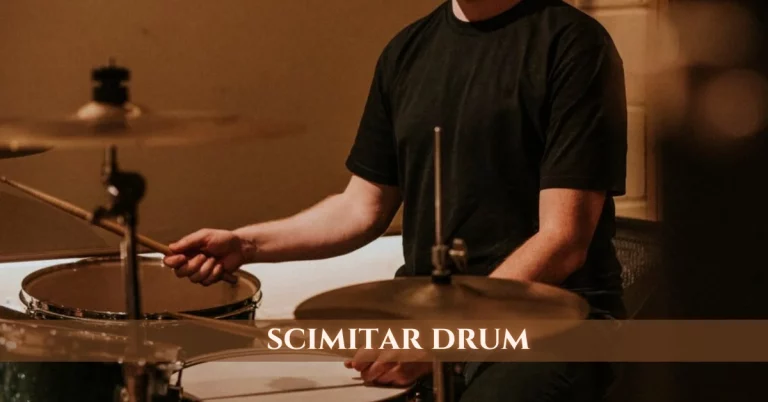Few film costumes have achieved the timeless status of Clint Eastwood’s poncho. This simple yet distinctive garment has become a symbol of rugged individualism, stoic heroism, and Western mythos. As one of Hollywood’s most revered actors and filmmakers, Clint Eastwood crafted a legendary persona partly through his iconic wardrobe choices, with the Clint Eastwood Poncho standing out as a defining element. This article explores the history, symbolism, design, cultural impact, and modern interpretations of this memorable costume piece, revealing how it transformed from traditional attire into a cinematic icon.
The Western Attire of Clint Eastwood and Its Significance
Eastwood’s Rise as a Western Star
Clint Eastwood’s emergence as a Western film star in the 1960s revolutionized the genre. His portrayal of gritty, lone gunmen challenged the romanticized notions of the American West, bringing a darker, more complex character to life. Films like *A Fistful of Dollars* (1964), *The Good, the Bad and the Ugly* (1966), and *For a Few Dollars More* established Eastwood as the archetype of the stoic, tough, and silent cowboy, with his wardrobe playing a crucial role in crafting this persona.
The Role of Costume in Western Films
Costumes in Westerns are not mere clothing—they are symbolic tools that evoke era authenticity, highlight character traits, and reinforce thematic elements. The rugged attire, including hats, boots, belts, and, notably, the poncho, serve as visual cues that communicate the character’s background, personality, and moral compass. Western costume design aims to blend practicality with storytelling, making characters both believable and iconic.
The Clint Eastwood Poncho: An Iconic Wardrobe Piece
Description and Origins of the Poncho
Traditional Roots
The poncho originates from indigenous cultures of Mexico and the Andes, designed as a practical garment for protection against the elements while allowing freedom of movement. Made from wool or similar warm fabrics, ponchos feature a hole in the center for the head and often showcase colorful patterns and designs reflective of regional traditions.
Variations in Material and Design
In film, the Clint Eastwood Poncho varies from rugged, plain-colored fabrics to more stylized versions. Typically, it reveals earthy tones such as tan, brown, or gray, aligning with the Western aesthetic. Over the years, costume designers have adapted traditional styles to suit on-screen needs, emphasizing durability and visual impact. The poncho’s simple yet versatile design allows it to serve both functional and stylistic purposes.
Notable Films Featuring the Clint Eastwood Poncho
*The Good, the Bad and the Ugly* (1966)
This film features Eastwood’s character, Blondie, clad in a rugged, tan poncho that has become synonymous with his persona. The poncho’s practical design complements his stoic demeanor and provides concealment during tense standoffs, enhancing his mystique.
*A Fistful of Dollars* (1964)
Although the earlier film, the poncho already appeared as a staple Western garment, marking Eastwood’s character as a classic gunslinger. Its simplicity allowed for quick movement during shootouts, reinforcing the character’s efficiency and resolve.
*For a Few Dollars More* (1965)
The continuity of the style across films helped establish the Clint Eastwood Poncho as a visual identity, making him instantly recognizable on-screen and off.
The Symbolism and Cultural Impact of the Poncho
The Western Icon and Cultural Bridge
The Clint Eastwood Poncho embodies the rugged, solitary cowboy archetype. Its practical design reflects resilience and adaptability, qualities associated with Western heroes. The poncho also serves as a visual bridge linking American Western mythos with Mexican and indigenous cultural roots, enriching the storytelling with layers of tradition and identity.
Character Identity and Differentiation
Eastwood’s use of the poncho created a distinctive silhouette that set his characters apart from other Western heroes. The simplicity of the garment conveyed a sense of mystery and stoicism, helping to forge a memorable character identity that endures in popular culture.
Influence on Western Genre and Fashion
The Clint Eastwood Poncho has inspired countless imitations and homages in media, fashion, and pop culture. Fans frequently adopt the look for cosplays, costume parties, and fashion statements, cementing its status as a symbol of coolness and resilience. Its influence can be seen in modern Western films, where similar styling choices often pay tribute to Eastwood’s legendary look.
Design, Practicality, and Filmmaking Aspects
Costume Crafting and Material Choice
Designers carefully selected materials to ensure the Clint Eastwood Poncho looked authentic yet functional. Wool and heavy fabrics provided durability for film shoots, while stitching and color tones matched the rugged terrain of Western landscapes.
Facilitating Movement and Creating Mystique
The loose, flowing nature of the poncho allowed Eastwood’s characters to move freely during action scenes, while also concealing weapons or movements, adding to the mystique. Its minimal yet impactful appearance contributed to the silent, watchful persona that became Eastwood’s signature style.
The Cultural Legacy and Modern Reinterpretations
Legacy in Western Films and Fashion
The Clint Eastwood Poncho remains a symbol of the Western genre, influencing generations of filmmakers, costume designers, and fans worldwide. Its recognizable silhouette has been referenced in parodies, advertisements, and fashion collections, attesting to its enduring appeal.
Collecting and Reproducing the Icon
Enthusiasts and costume creators craft replicas to honor the legacy of Eastwood’s style. High-quality reproductions are popular at cosplay events and film festivals. Some companies even offer custom-designed ponchos inspired by the original, allowing fans to connect with the mythos directly.
Fashion and Cultural Tributes
Modern designers occasionally incorporate elements of the Clint Eastwood Poncho into contemporary fashion, blending Western ruggedness with urban style. Films and television continue to draw inspiration from Eastwood’s iconic look, cementing its place in both cinematic history and popular culture.
Summary of Key Points
| Aspect | Details |
|---|---|
| Origins | Traditional Mexican and indigenous garment, adapted for Western films |
| Materials | Wool, heavy fabrics with earthy tones like tan and brown |
| Symbolism | Embodies rugged individualism, stoicism, and cultural fusion |
| Film Importance | Creates a distinctive visual identity for Eastwood’s characters |
| Design Characteristics | Loose, flowing, practical for movement and concealment |
| Legacy | Influencing Western fashion, pop culture, and film iconography |
Frequently Asked Questions
- Q: What makes Clint Eastwood’s poncho so iconic?
- Q: Did Eastwood design his own outfit?
- Q: Can I buy a similar poncho today?
- Q: What is the cultural significance of the poncho?
- Q: How has the poncho influenced modern fashion?
- Q: Are there other famous Western costumes like the poncho?
A: Its simplicity, practicality, and association with Eastwood’s tough, silent persona have made it a visual symbol of Western ruggedness and coolness.
A: No, costume designers crafted the poncho, but Eastwood’s consistent use of it cemented its association with his character.
A: Yes, many costume stores and online shops offer replicas inspired by Eastwood’s famous look, suitable for cosplay or fashion statements.
A: It links indigenous traditions with Western storytelling, symbolizing resilience and cultural blending.
A: Its rugged aesthetic has been incorporated into contemporary styles, often representing toughness and individuality.
A: Yes, cowboy hats, leather vests, and bandanas also hold iconic status in Western cinema and culture.
In conclusion, the Clint Eastwood Poncho is more than just a piece of clothing—it’s a cultural artifact that encapsulates the spirit of Western heroism. Its enduring legacy continues to influence films, fashion, and fans worldwide, solidifying its place as an iconic symbol of American and Mexican cinematic history.


